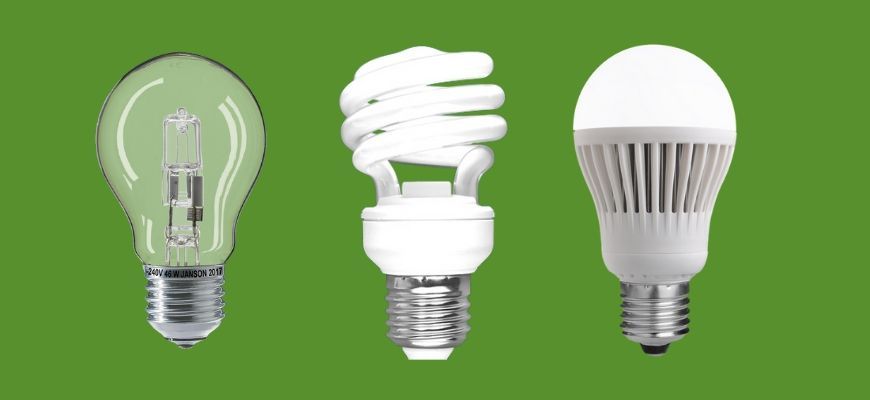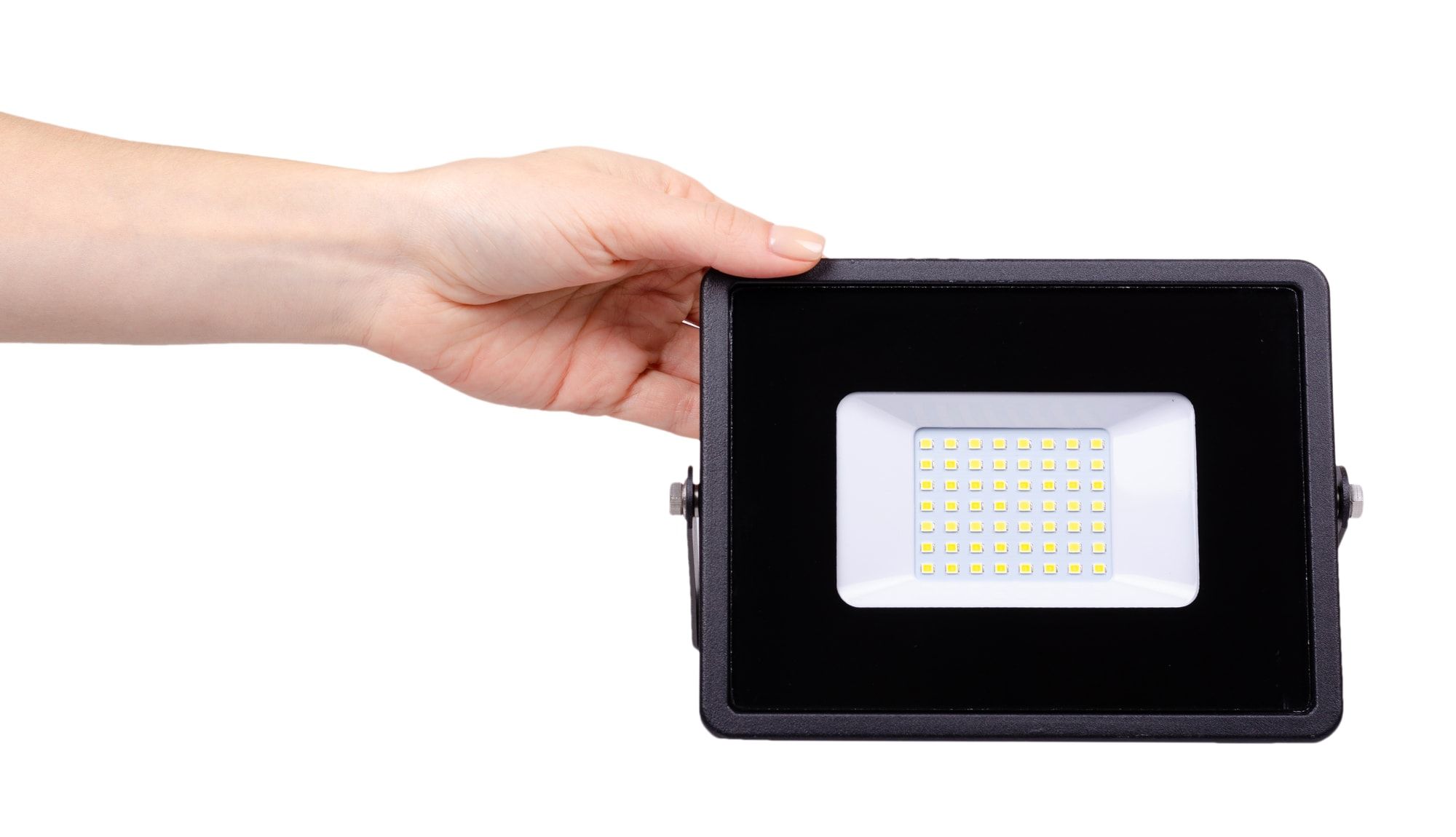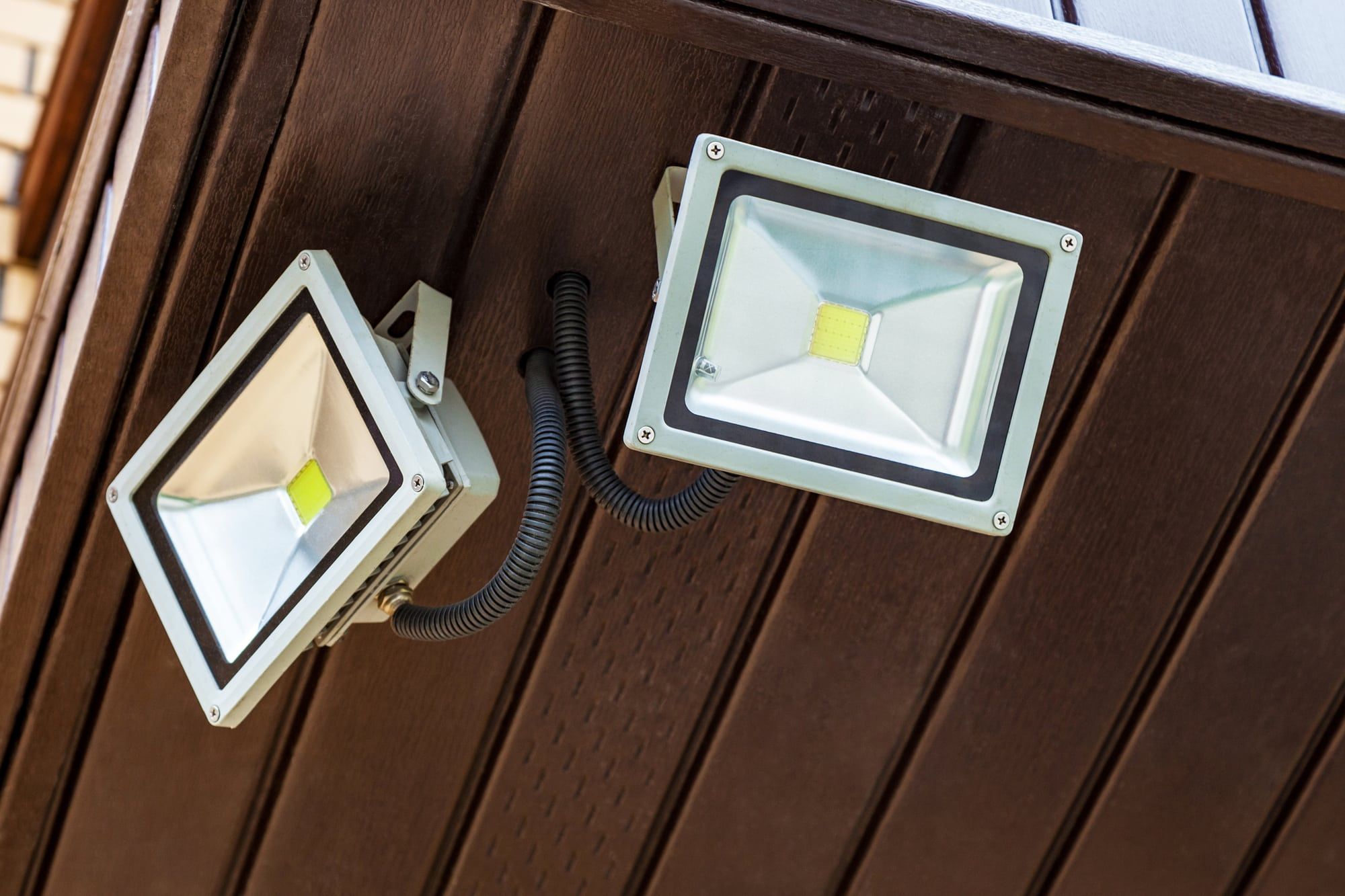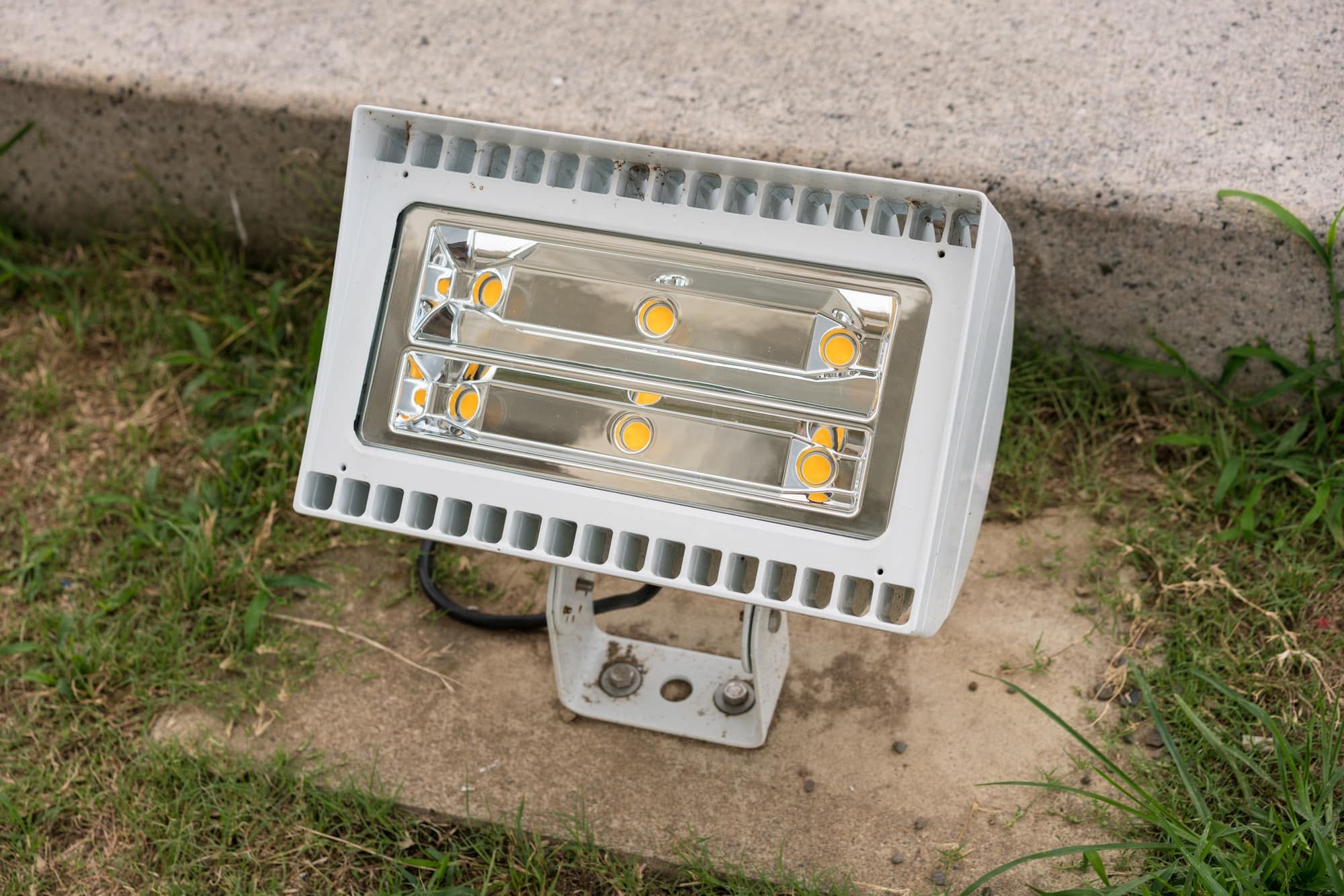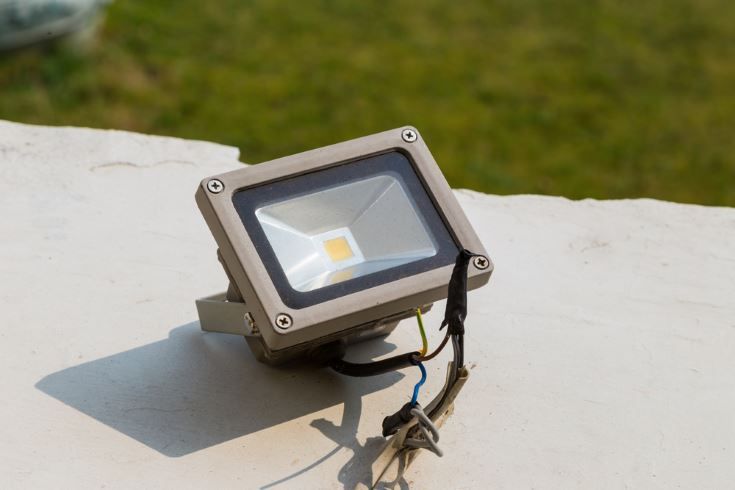Outdoor lighting is now a thing of the present, and there were so many things that you couldn’t enjoy doing outside in the past after sunset because darkness prevented you from enjoying them. A floodlight is an artificial source of light that provides you with a powerful source of illumination.
Floodlights are normally installed on large sports fields or areas that need plenty of light coverage from a single fixture. They are often paired with security cameras. If you want to know more about how these lights are used and what bulbs are compatible with different needs, then you’ve come to the right place. Let’s explore all the different types.
Types of Flood Light Bulbs
There are typically three main types of lightbulbs that are compatible with outdoor floodlights: LEDs, CFLs, and halogens. We are going to go over each one of these flood light fixtures types and specify what are the characteristics of each while trying to weigh the pros and cons to see which of them would make the best choice for outdoor floodlights.
LEDs
LED lights have gained lots of terrain over the past years, as they provide a lot of different benefits for those interested to use them both indoors and outside. LED diodes will create light thanks to a semiconductor material that allows electrical current to pass through.
LED bulbs are considered to be the most advantageous types of outdoor lights out there because they bring forth benefits such as:
- They have a longer lifespan compared to a lot of different other types of bulbs out there. A single LED diode and illuminate up to 100.000 hours before it needs replacing. Because they outlive other bulbs, they are also more cost-efficient in the long term, as they won’t require changing all that often.
- They are also more efficient in the way they consume energy. The efficiency of a light bulb is calculated by considering the lumens per watt. In translation, a LED bulb requires less energy to produce the same amount of light as other bulbs do.
- The energy efficiency of a LED light is also reflected by the lower heat emissions. When they are operational, LED lights do not have a large heat output, which means that no energy is wasted. There are other types of light bulbs that waste energy because they heat up way too much, and therefore lose a lot of energy because of that specific reason.
- LED lights are also more eco-friendly because they do not contain the same amount of toxic substances like other types of light do (for example, CFL bulbs contain mercury). LEDs can also be recycled once the bulbs are no longer of use. If you add the fact that they are also energy-efficient, they are clearly the best choice for eco-conscious shoppers.
- Because LED lights will fade once they are close to the end of their lifespan, they will never fail instantly. When you notice they are less bright, it’s basically a warning that they will need to be replaced soon, which means that you’re not likely to be caught off-guard and left in the dark.
While these are just the main advantages, there are plenty of other perks to using LED lights for floodlight fixtures: they are available in a variety of different colors, they are dimmable, they will turn on instantly, and they are smaller compared to other types of bulbs. Furthermore, they are also more durable, which means they won’t break easily.
However, it’s important to mention a few disadvantages that you should be aware of if you’re planning to buy these types of lights for yourself:
- Even if they are cost-efficient in the long haul, they also require a larger upfront investment, as LED lights are some of the most expensive types of bulbs out there. In fact, the initial price of the product is the very first thing that discourages people from buying this particular type of light bulb.
- If you have a large and powerful floodlight that requires LEDs to work, you’re probably going to need a lot of them to generate a large light output. Because of that, even if LEDs don’t have a high heat emission, using many of them on a single fixture will raise the total heat output, which is why you need to make sure that you are using a fixture with a suitable heat sinking system.
CFLs
CFL is an abbreviation for compact fluorescent light bulbs and it is sometimes found in flood light fixtures, although it is not as common as LEDs or halogen bulbs. Why is that? Because even if they bring forth a series of advantages, CFL bulbs also have a lot of drawbacks, as you will soon learn to understand.
Some of the reasons why CFLs might be efficient in a floodlight fixture include:
- The price of the product is fairly lower compared to other types of bulbs (and especially if we compare it to LEDs). For the most part, a LED bulb is about three times higher compared to that of a CFL bulb.
- Because they consume about 75 percent less energy compared to other incandescent bulbs, they are considered to be rather performant and efficient.
- Aside from LED lights (which we are often going to use as a benchmark to compare other types of bulbs to it), CFL lights have the longest lifespan, which can reach up to 15,000 hours per bulb. It may be nothing compared to the 100,000 hours that a LED bulb can reach, but it is still a lot compared to other types of bulbs.
Even with these benefits, there are plenty of reasons why CFL bulbs aren’t really efficient for use in outdoor fixtures, which is why it’s important for you to know that:
- CFL bulbs are toxic. They contain chemicals such as mercury which isn’t just a danger for you, it also poses a threat to the environment. That makes CFL bulbs not only harmful to produce and dangerous to handle, but they are also unable to be recycled. For the most part, these bulbs are safe to handle as long as the spiral tube glass doesn’t break and releases the mercury inside it.
- Unlike other types of bulbs that we’re reviewing today, CFL bulbs will not turn on instantly, as they can take up to three minutes to reach their full brightness potential. This isn’t a problem if you’re turning the light indoors and will be keeping them on for a longer time, but if you plan on using these bulbs with outdoor floodlights equipped with a motion sensor, you can see how that could be a problem.
- Another major drawback of these particular types of bulbs is the fact that turning them on and off on a regular basis will significantly reduce their lifespan.
- These lights are sensitive to temperature changes, which means that they might not be as bright as you expect them to be during the winter when temperatures drop significantly.
Halogens
Halogens are very common in outdoor floodlights and for good reason. In fact, they have long been considered to be the best type of bulbs to be used in outdoor fixtures until LEDs began making an entrance. These bulbs are often referred to as being the upgraded version of the incandescent light bulb, but what exactly do they have to offer?
- Halogens are extremely inexpensive, as they can cost up to 10 times less than a LED diode and are about half the cost of a CFL light.
- Bulbs have something that is called a CRI (which is short for “color rendering index”). When this CRI is high, it means that the light in question is able to produce very bright light, which is something that halogen bulbs do really well.
- Another reason why halogen lights are so popular with outdoor floodlights is the size of the bulb itself. Aside from being really small, a halogen bulb is also very powerful.
- Halogen bulbs will turn on almost instantly, unlike CFL lights which take minutes to reach their full brightness potential.
Other benefits of halogen lights include the fact that they are dimmable, go really well with motion-activated lights, and are safer for the environment compared to CFL bulbs because they don’t contain any mercury. Even so, there are drawbacks to choosing halogen bulbs over other types of bulbs:
- Compared to other types of bulbs, halogens aren’t that efficient. They have a tremendously large heat output, which means that plenty of the energy they produce is basically wasted. When they’re really hot, it’s impossible to change a lightbulb using your bare hands.
- Another very important thing that everyone should know about halogen bulbs is that they are sensitive to oils. That means that you should never touch them with your bare hands because your fingers have natural skin oils that will damage the bulb.
- The light of the bulb is very intense, and while that is normally a good thing, it is not advised for you to look straight into the light because that could cause visual injuries.
LEDs vs CFLs vs Halogens
Now that you know about the ups and downs of each type of light bulb, let’s examine how each of them acts when used in a floodlight fixture so that you can see which of them provides better performance for your particular situation.
LEDs
As we’ve mentioned before LED lights (or diodes, as they should be called) are winners in a lot of different chapters because the advantages they offer heavily outweigh the cons, but are they indeed the best solution for use with outdoor fixtures?
First of all, you need to consider that LEDs provide maximum efficiency in terms of lifespan and electricity consumption. Always keep in mind that floodlights require consuming a large amount of electricity in order to provide you with that generous beam of light we talked about earlier, so if you use bulbs that generate a lot of heat, that results in a lot of electricity loss. LED lights are clearly the best solution for people who are trying to cut down the costs on their electricity bills.
Another thing that speaks in favor of using LEDs instead of other types of bulbs is the fact that they are more durable compared to other bulbs. Since they are not as fragile and can illuminate even in harsh weather conditions, which also ensure quality and durability, even if the upfront costs are higher. Also, imagine buying a floodlight and not having to worry about buying replacement bulbs for the next decade.
CFLs
CFL light bulbs do offer some advantages, but they are not nearly enough to be considered a viable solution when it comes to floodlight compatibility. The good news is that these bulbs are less expensive when compared to others and they have a decent lifespan when compared to halogens.
However, it’s important to note that they are fragile, which is a characteristic you don’t really want in a product that should be designed for outdoor use. The fact that turning the lights on and off takes a toll on their lifespan is also a major setback, especially if you own motion-triggered floodlights. The fact that CFL bulbs contain mercury which is highly toxic doesn’t really help a lot either.
Halogens
Before LEDs, halogen bulbs were the stars of floodlights. While they aren’t considered as efficient as LED diodes, halogen lights do offer a series of advantages that make them suitable for outdoor use. They are extremely powerful and bright which is one of the most important features that recommend them for use in floodlights.
They don’t require any warm-up, which is another important thing to have especially when they’re being paired with motion-activated light fixtures. Because of their size and power, halogen lights are great for small outdoor fixtures. They are also extremely inexpensive and people who don’t want to spend too much money on bulbs upfront will love them.
Even so, halogens waste a lot of energy due to the high amount of heat they generate. A halogen bulb also has a relatively short lifespan, basically 10 times less when compared to a LED diode.
Conclusion
While there are other types of light bulbs out there, these are the most common ones that you’ll find in outdoor floodlights. But “the most common” doesn’t always equal ``the most efficient”, which is why not all these three types of lights are still a viable choice.
CFL used to be efficient a while back when you really didn’t have that many choices. CFL bulbs were quickly replaced by halogens, which have a really strong light output, are really bright, and their size makes them compatible with a lot of different floodlights. Even so, halogens today aren’t as efficient as the declared kings of the lighting world: the LED diodes.
Looking at these three types of bulbs side-by-side, it is clear that LED lights are the most efficient solution for cost-effective and durable lighting, but you also need to consider the drawbacks we mentioned when we examined the performance of LEDs in outdoor fixtures.

